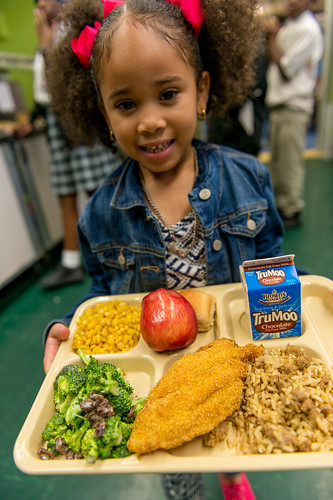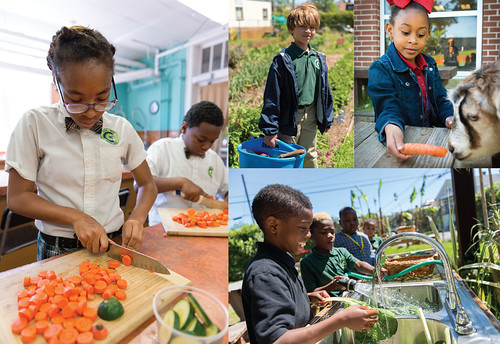
They say a picture is worth a thousand words, and in the digital age we have ample opportunity to document and broadcast every moment, meeting and meal. We have all seen those unappetizing photos of food served at school that quickly go viral. A lonesome whole wheat bun atop a sad fish fillet; a mysterious-looking meat mixture served next to an apple. It’s natural to ask, “Is this what they serve for lunch!?”
No, it’s really not.
In my ideal world, the Internet would be abuzz with photos like the one above, also a school lunch featuring a fish fillet, taken at Samuel J. Green Charter School in New Orleans. One of the first public schools to open in New Orleans post-Katrina, the mission of Samuel J. Green Charter School is to prepare 100 percent of its students for college, careers and a successful life. Central to leading a successful life is living a healthy life, and Green fosters an atmosphere where healthy eating and nutrition education are central to the core curriculum.
With funding from the USDA Farm to School Grant Program, FirstLine Schools, which operates its signature program, the Edible Schoolyard New Orleans, Green and four other schools in New Orleans set out to make sure that at least five percent of all the foods offered in its cafeterias were sourced locally. With help from Chartwells, a food service management company, FirstLine has exceeded this goal; today, 11 percent of the food that is served comes from nearby farms and food businesses. In the meal pictured above, the rice medley, apple and milk are all from local partners, while the broccoli salad was made on site.
On the same day this meal was served – and in fact on every day at Green – kids can have a hands-on experience with agriculture in the school garden. Growing spaces wrap around the school – a butterfly garden, an orchard, live animals, raised beds and compost piles aplenty – all reminders that the food in their cafeteria starts with the small act of planting a seed in the ground or caring for a farm animal. Culinary skills are taught as well, with children routinely cutting and chopping and making their own meals straight from the garden.
Is the food at your school fantastic? The garden overflowing with produce? The USDA Farm to School Census indicates that over 40,000 schools, serving 23.5 million students, are buying local foods for the cafeteria and teaching children where their food comes from. So I am certain there’s no end to the great photos we could share with one another. Post a photo of what your school is doing on Twitter, Instagram, Vine, Facebook or Tumblr using #farmtoschool or #realschoolfood.
“This is what they serve for lunch?” parents will exclaim, amazed that school lunch can be so nourishing, so local and so good.
To learn more about the USDA Farm to School Program, sign-up for the Farm to School E-letter.

